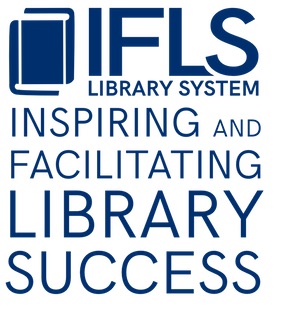Many thanks to Christy Rundquist from Pepin for this article about the power of adaptation!
A long time ago in a galaxy far, far, away…….
Not really. It was 2006 and Pepin was participating in an IFLS mini-grant for early literacy. We partnered with the local school and the Pre/K teacher suggested we purchase complete, pre-made kits from Lakeshores Learning. We purchased 16 kits that contained a book, activity cards, crayons and other ephemera to reinforce the concepts. For example the “Lacing” kit contained strings, multiple plastic spools, buttons of several sizes, discs, shape cards, the activity cards and the book “Corduroy”. These kits were used at school during the school year and at the library during summer break for the first 3 years.
The kits became “well loved” and now lived only at the library. Each item record had a message that read “Pieces may be missing”. Crayons became broken. Activity cards could no longer be cleaned. Contents were mixed into different kits. They needed to be cleaned, have pieces replaced or removed, books repaired or other sprucing up done to them.
Fast forward to WLA 2012. During one of the sessions the speakers mentioned that they had created kits of 5-6 books on a topic that families could quickly grab and take home; a “Grab n’ Go” bag. I began to think about repurposing our backpacks to be used in a similar way.
Now it’s June 2013 and we finally have changed the backpacks over. We browsed through our children’s picture book bins and removed 4-7 books per subject. We started with 10 subjects, including death, divorce, being scared, public safety (police/fire/ambulance), beginning school, etc. We included non-fiction and fiction books; the “Death” backpack includes, in part, “Let’s Talk About Going To A Funeral” and “Rudi’s Pond”. The backpacks and individual books were de-cataloged. The backpacks emptied of their original contents and the chosen books were placed into the backpack. The titles of the books are displayed on the outside of the backpacks for inventory purposes and the backpacks are labeled with the subject they cover. Each book is marked with which backpack it belongs in and how many books are to be included in the kit (ie School 1 of 5). New bib records created and cataloging completed.
We have 5 empty backpacks yet to use – 1 backpack has disappeared over the years of use. We may expand our backpack kits to include other subjects such as dinosaurs, counting, alphabet or other fun topics. We still own the stands that were purchased originally and will use those to display the backpacks.
Pros and Cons:
- · These backpacks will make it easier for patrons and staff to quickly find multiple books on a subject; instead of having to look through several bins the books are already gathered in one place.
- · Many of these books were not circulating individually and this should increase their use and visibility.
- · Mixing fiction and non-fiction gives families options on what type of books best meet their needs.
- · Checking out the backpacks creates one circ instead of 4-7 for each individual book.
- · The cost of replacing a backpack can be high, especially when including titles in hard cover.
We had minimal costs associated with this project; as we already owned the backpacks, display stand and books. The only costs were re-labeling and staff time.
| Empty clear backpacks are still available from Lakeshore Learning. |
This project could be easily replicated in other libraries. With the recent discussion about dropping Dewey classification in favor of BISEC or some hybrid system this is a small step to experiment with that idea. Other options include using free book bags gathered from conferences or purchasing bins with lids that can be stacked or stored on shelving. Purchasing paperback books would lower the cost of replacement if the kit were lost. Re-purposing books you already own would keep start up costs to a minimum.
